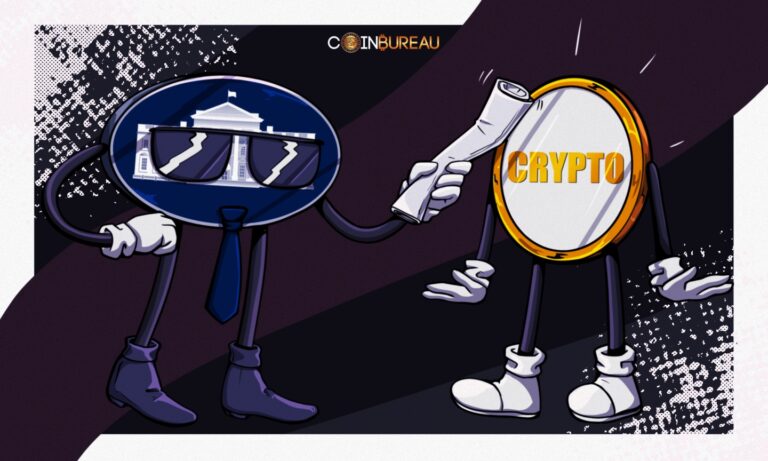Last week, the world’s rich and famous descended in their private jets on a small Swiss town to discuss ideas about how to save the world. Many of these ideas are likely to shape our future – not that we get any say in them, naturally. This is, of course, the World Economic Forum’s annual jamboree at Davos.
Many ideas and initiatives get announced at Davos and that’s why it's incredibly important to know what was said and by whom. Of course, this is a difficult task when you consider the fact that it’s held over several days with multiple people pontificating on numerous panels.
So, that’s why I thought I would take the proverbial bullet and go through all of these talks so you don’t have to.
In my video today, I will be taking you through some of the most important discussions and topics from the summit. Everything from internet censorship to CBDCs, social unrest to climate change. There were even panels devoted to cryptocurrencies.
There is a lot to cover and this is a video you don’t want to miss. You can watch it here.
📊 My Personal Portfolio 📊
USDC 38.14% | BTC 28.00% | ETH 27.64% | ATOM 4.53% | DOT 1.68%
📈 Guy’s Forward Guidance 📈
Crypto sentiment appears to be taking a turn, if you believe the fear and greed index. And, while this bear market rally has been fun, the fact of the matter is that the fundamentals haven’t changed. All it takes is a couple of catalysts and the greed will be gone.
The catalyst that’s staring us right in the face goes by the name of Jerome Powell, the chairman of the Federal Reserve. Investors are pricing in a 0.25% rate hike with nearly 100 percent certainty. I want to say that kind of consensus is a bad sign, but the Fed has proven itself to be predictable as far as rate hikes go. It’s the rhetoric that’s unpredictable, and history has shown that Jerome can quickly send the markets sliding.
But of course, that’s just the macro side of the story. Somehow, crypto holders have been ignoring the crypto side of the story, and this is where things get concerning. For starters, Bloomberg published a hit piece about Binance storing user and exchange funds in the same wallets. Less than 48 hours later, it was revealed that the SEC has been investigating Wall Street over its crypto practices. As I’ve said before, I think the SEC is out for blood.
This is where another concerning crypto headline comes in: Polkadot’s Web3 Foundation randomly reiterating that DOT is no longer a security. In the context of the SEC’s recent activities however, the announcement is anything but random. Some of you may recall that Polkadot founder Gavin Wood has been extremely concerned about crypto regulations since the summer of 2021. It seems those concerns are only increasing.
This ties into a worrying trend I’ve seen on the charts, specifically the ETH/BTC chart. ETH seems to be collapsing in value against BTC over the last few days. Not only that, but the 50 day and 200 day moving averages are on the cusp of creating a death cross. This may suggest that ETH could be about to lose a lot of value against BTC. The catalyst could be a crackdown on another major altcoin, or a bad resolution of the SEC’s case against Ripple.
It’s a similar situation for BTC’s weekly price action. The 50 day and 200 day moving averages are about a week or two away from likewise creating a death cross. The catalyst for this breakdown would likely be a macro factor, such as Jerome being more hawkish than expected during this coming week’s press conference. Alternatively, there are still some lingering crypto-specific factors, including potential regulatory actions for stablecoins.
💵 What if This Time is Different? 💵
‘This time is different’ is often referred to as the four most dangerous words in investing. That’s because market cycles are, by and large, almost always the same. They begin with a big rally that starts off slow and accelerates. Then there’s a blow-off top, followed by a sharp crash, a bit of sideways action, another rally, and then a final capitulation before a long bear period.
This progression is basically what you see on the famous Wall Street Cheat Sheet, and it’s something that I don’t think is going to change anytime soon, if ever. What can and does change however is the timing of the cycle. Take the crypto cycle for example. It’s typically 2-3 years of positive price action, followed by 1-2 years of negative price action = 4 years.
As far as I can tell, most crypto investors are operating under the assumption that crypto’s 4 year cycle is still in play. The problem is that as time goes on, more of the charts and indicators that were built on this assumption are being invalidated. The Stock To Flow model is the best-known example, but it’s not the only one that’s been broken, and it won’t be last.
As most of you will know, Bitcoin was created in response to the 2008 financial crisis, or rather, as a response to the response of the central banks, which was to print money. Since 2008, interest rates around the world have been essentially at zero. That was until March last year, when central banks all started hiking interest rates to levels not thought possible.
Whereas crypto investors are operating under the assumption that crypto’s 4 year cycle is in play, regular investors are operating under the assumption that the Fed will bail out the markets when they crash, or when something in the financial system breaks. But as we’ve seen with the UK, central banks can continue to raise rates while keeping the system intact.
What this means is that the market cycle may take much longer to play out for both crypto and other asset classes. For crypto, the recovery could be delayed by, say, the lack of crypto regulation that allows for more institutional investment. Meanwhile, the recovery in stocks could be delayed by the fact that it will take much more to spook the Fed. Food for thought.
🔐 Trust But Verify 🔐
I’m sure you’ve come across that phrase at least once in your life. Well, recent incidents in the crypto space have forced me to come up with a new version for my fellow crypto bros:
“Trust, but verify, and re-verify, and re-verify and re-verify because it only takes one small oversight to lose all your crypto.”
That’s a tad dramatic, I agree. But the point is, when it comes to accumulating generational wealth in crypto, timing the market is probably less meaningful than perhaps making sure you hold onto those assets long enough to pass them down. Just ask James Howells.
Or even Proof founder and Moonbirds creator Kevin Rose, for that matter. Rose lost over $2 million in NFTs just a couple of days ago when he fell for a phishing attack that was disguised as a normal seaport transaction. The attacker took control of a total of 40 NFTs.
Rose isn’t the only crypto personality to recently fall victim to phishing scams, however.
Just a couple of weeks ago, popular NFT influencer ‘NFT God’ lost all his crypto and NFTs after accidentally downloading malware from a phishing site that appeared as a sponsored website when searching for the popular video streaming software ‘OBS.’ NFT God described the incident as something that violated his “entire digital livelihood.”
And, a week before that, another NFT influencer by the name CryptoNovo also lost several high-profile NFTs in a suspected phishing attack, including two CryptoPunks worth over $300,000, as well as several other NFTs from popular collections.
According to a recent report by blockchain security firm SlowMist, about 39% of incidents involving NFT theft in 2022 were a result of phishing attacks. The report also outlined five common phishing techniques used by crypto scammers in 2022. We’ve already seen two of those five techniques used in the attacks I mentioned above.
There’s the ‘Zero Dollar Purchase’ technique, involving malicious sale transactions in the case of Kevin Rose, while the ‘Trojan Horse Currency Theft’ technique – involving malware – in the case of NFT God. The other three techniques listed in the report are just as devious.
The first uses malicious browser bookmarks to potentially gain access to and take control of the victim’s personal Discord account, as well as any server to which they might have exclusive access.
The second technique involves tricking the victim into signing something known as an “Ethereum blank check”, which is essentially a transaction involving an “eth_sign” method. This method allows the attacker to use your signature to sign any hash, i.e., use your private key to sign any transaction they choose, including one that transfers all your assets to them.
And the third and final one involves attackers airdropping tokens worth as little as .01 USDT or 0.001 USDT to victims who have addresses that are nearly identical, save for the last few numbers. This is to trick users into accidentally copying the incorrect address into their transfer history.
Unfortunately, the list isn’t exhaustive and attackers are constantly coming up with new techniques. But one common thing I’ve noticed when it comes to signing phishing transactions is that most of them happen due to a lack of description or understanding of the consequences of signing such transaction requests. Most wallets just display a string of letters and numbers and that’s it.
I reckon a lot of pain could be averted if every transaction approval request just came with a description explaining it. Well, thankfully, tools like Fire do exactly that. It also helps if you practise the segregation of assets into vault wallets (long-term storage) and active wallets.
Keep yourselves safe folks because that, in large part, is what financial freedom is all about.
🔥 Deal of The Week 🔥
The recent rally in crypto prices has left many people wondering if it might be time to top up their portfolios. To do that you’ll need a top-notch crypto exchange with access to 100’s of altcoins, affordable fees and, most importantly, proof of reserves.
One exchange that offers all of that and more is OKX. Moreover, the team here at Coin Bureau have been able to negotiate a special 40% lifetime fee discount.
👉 Sign up to OKX & bag yourself a 40% trading discount for life!
However, even though OKX has proof of reserves, you should never store all of your crypto on a centralised exchange. It’s always best practice to keep the vast majority of your portfolio on a hardware wallet like Ledger or Trezor.
🔮 Video Pipeline 🔮
- Electric Capital Report: What you need to know!
- China Reopening FOMO: You need to know this!
- Aptos Vs. Solana: Which is the better bet?
- Token Vesting Report: Should we be worried?
🏆 What's New At CoinBureau.com This Week? 🏆✅ Binance US Review (2023): The Pros, Cons, and Features✅ Binance vs Binance US Review 2023: Pros, Cons, Which is Best?
That’s all for this week from the Coin Bureau and thanks for supporting our work to make crypto education better!
Guy your crypto guyDisclosure: Authors may own cryptoassets named in this newsletter. These are unqualified opinions, and a Coin Bureau newsletter, is meant for informational purposes only. It is not meant to serve as investment advice. Please consult with your investment, tax, or legal advisor.














